Mar 28, 2012 | Freedive Training, Freediving, Meditation, Yoga
Weather has picked up very nicely the last few days. The peak of Agung has been clear, the sun shining and the water warm and clear. The last few days have seen some very pleasant free-diving. All hail the return of sunny days…
Onsite, things here have been plodding on, as fast as they ever do in Amed, Bali.
These will probably be the last pics before the place is all shiny, bright and ready to be filled with stuff…
This space will be used for free-diving theory, yoga and meditation practice and then for hanging out later on…
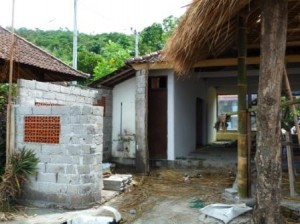 This will be the funkiest little free-diving gear storage space anywhere…
This will be the funkiest little free-diving gear storage space anywhere… 
At the moment, we have the ugliest front in Bali. But in one month (or ten) this ugly place will be the first purpose built free-diving/yoga space in Bali…watch this space.
Mar 21, 2012 | Freedive Training, Freediving
 Last year I read Simon Borg-Olivier’s idea that the mysterious Pranayama practice of Plavini was essentially a form of lung packing (pushing extra air into the lungs to fill them beyond normal volume)and not the filling the stomach with air, as it often described.
Last year I read Simon Borg-Olivier’s idea that the mysterious Pranayama practice of Plavini was essentially a form of lung packing (pushing extra air into the lungs to fill them beyond normal volume)and not the filling the stomach with air, as it often described.
A couple of years ago I stopped packing and teaching packing to most students, feeling it to be unnecessary and probably not too good for the lungs. It also just didn’t seem like good yoga. Many also consider it to be a factor in many lung squeezes(lung oedema), which we’ll come to.
That said, Mr Borg-Olivier is one of the most experienced Yoga teachers around and a great free-diver, so I’m inclined to agree with him. It is listed as one of the 8 principle Pranyams though I have never heard of anyone teaching it or practising it. Except maybe Mr Borg-Olivier.
When packing, one fills the lungs and then gulps down extra air into the lungs. This stretches the membrane of the alveoli, allowing a person to expand their total lung volume, up to three litres in some cases.
Whether it is a Yogic practice or not, there seems to be relationship between lung packing and squeezes. Something which would seem to be counter intuitive, if packing means more air, one should be less likely to suffer lung squeeze, squeeze being caused by extreme negative pressure within the alveoli.
There are many people who deny a link, but they seem to generally be people who practice packing. Naturally they would have some resistance to the idea that it could induce squeezes.
For those who believe in a link, there have been various theories put forward. I won’t go into them here as I believe relatively recent research gives a better idea how packing could be a factor in squeezes.
For people who dislike scientific jargon I will summarise the research simply. Packing, when practised by trained divers, causes air to escape into the chest cavity. In trained free-divers this is normally asymptomatic, (there are no symptoms, no pain, no blood and no difficulty in breathing.) The alveoli are simply swollen with so much air that some escapes into the chest cavity. This was shown with CT scans to be the case, to varying degrees in all the free-divers trained in packing. (One didn’t have air in the chest cavity, but was later shown not be proficient in the technique.
This research now provides a more satisfactory reason why packing might be related to squeeze.
With packing you fill the lungs and overfill them, creating tiny tears in the lining. If you then dive to below residual volume, causing blood shift, you are creating the opposite effect in the alveoli. They compress and the capillaries around them swell with blood to fill the space.
If the membrane between alveoli and capillary has been compromised before the dive by packing, then on the ascent to the surface it is easy to imagine that when the alveoli expand once again some of the blood may stay in the air space. This will compromise gas exchange and may lead to coughing of blood or plasma.
Lung squeeze is free-diving’s dirty little secret and it is much more common than people let on. See Sebastien Naslunds great article.
On many free-diving courses squeeze is but briefly mentioned and there is often no mention of a possible link between packing and squeeze, though often they are taught at the same level. The conclusion of this research is that the practice of packing is essentially a repeated barotrauma(pressure injury) and the accumulative effects are unknown. It therefore seems strange that packing should be thought at the intermediate, level as it is on many courses.
So now whether packing is really the mysterious Plavini pranyam or not seems immaterial. Unless you really into competition, packing seems like a needlessly risky activity, especially for ex-smokers or those whose lungs might not be as robust as they should be.
And besides Jaques Mayol did over 100 metres without packing, so what’s the need?
Here’s the abstract from the research so you can make up your own minds..
Abstract
Glossopharyngeal insufflation causes lung injury in trained breath-hold divers.
Source
Department of Thoracic Medicine, Concord Repatriation General Hospital, Concord, Sydney, New South Wales, Australia. stev78@optusnet.com.au
BACKGROUND AND OBJECTIVE:
Glossopharyngeal insufflation (GI) is a technique practised by competitive breath-hold divers to enhance their performance. Using the oropharyngeal musculature, air is pumped into the lungs to increase the lung volume above physiological TLC. Experienced breath-hold divers can increase their lung volumes by up to 3 L. Although the potential for lung injury is evident, there is limited information available. The aim of this study was to examine whether there is any evidence of lung injury following GI, independent of diving.
METHODS:
Six male, competitive breath-hold divers were studied. CT of the thorax was performed during breath-holding at supramaximal lung volumes following GI (CT(GI)), and subsequently at baseline TLC (CT(TLC)). CT scans were performed a minimum of 3 days apart. Images were analysed for evidence of pneumomediastinum or pneumothorax by investigators who were blinded to the procedure.
RESULTS:
None of the subjects showed symptoms or signs of pneumomediastinum. However, in five of six subjects a pneumomediastinum was detected during the CT(GI). In three subjects a pneumomediastinum was detected on the CT(GI), but had resolved by the time of the CT(TLC). In two subjects a pneumomediastinum was seen on both the CT(GI) and the CT(TLC), and these were larger on the day that a maximal GI manoeuvre had been performed. The single subject, in whom a pneumomediastinum was not detected, was demonstrated separately to not be proficient at GI.
CONCLUSIONS:
Barotrauma was observed in breath-hold divers who increased their lung volumes by GI. The long-term effects of this barotrauma are uncertain and longitudinal studies are required to assess cumulative lung damage.
Aug 4, 2011 | Physiology of free-diving, retreat, Yoga
This special retreat is for people with an interest in the trans-formative power of Yoga and the healing energy of water. It is aimed at people of all levels of physical and yoga ability, including those who are not aquatically inclined.
 For both complete beginners and more advanced students alike, the retreat will be a fascinating exploration of the mind and body.
For both complete beginners and more advanced students alike, the retreat will be a fascinating exploration of the mind and body.
This very special retreat is a journey of self discovery through two related elements, water and air. It’s a journey during which we will re-discover our aquatic heritage and transform our relationship to water, deepening our awareness of our own minds and bodies and the invisible bridge between them, the breath.
The tools for this adventure in self-understanding are the ancient insights of yoga and meditation supplemented by the modern techniques of elite free-divers.

We will practise yoga asana, pranayama and meditation to come into the subtler aspects of the breath and we’ll use the techniques of elite free-divers to harness our aquatic potential. We will focus on developing aquatic comfort, using water as a healing medium. This is not a competitive free-diving course, the free-diving aspect of the retreat is entirely optional.
Asana
Our Asana practice will focus on exploring the qualities of stillness and motion, opening up the channels of the body to move in a more fluid way. In held poses we’ll find the subtle movement even in supposedly static asana. In flowing vinyasa we will explore the inner stillness that comes with breath awareness and Bhandas(psycho-muscular locks .)
Breath
The breath is the bridge between mind and body, the conscious and the unconscious. To develop control over the mind and body first we must understand and control the breath.
Using the know-how of elite free-divers we will also learn how to access the breath in new ways. We will learn about the physiology of the breath and learn how use that to influence the mind and body, along the way transforming our relationship with water.
After tuning into the physical breath we shall explore subtler aspects of the breath, with the use of Asana and meditation we’ll tune into the breath as energy and move towards the healing power of Pranayama, the vast science of Pranic energy cultivation .
Water
We’ll take our fresh understanding of the breath into the healing medium of water. All terrestrial life was born in the ocean, just as we are born in the waters of our mother’s womb. When we understand our latent aquatic ability and learn to be in water it’s with a sense of home-coming or reunion. It is this sense of inner union that is the essence of yoga. Essentially what we will be practising is a form of oceanic yoga.
 The training offered will include;
The training offered will include;
Daily Asana practice with a focus on fostering a personal practice through self understanding.
Aquatic Meditation in the pools and ocean and dry meditation in the wonderful yoga sala of Villa Boreh
Breath-work; focusing on developing understanding of the respiratory process and using the breath optimally, using it to influence both the sympathetic and parasympathetic nervous systems.
Yoga Nidra; this wonderful technique of guided meditation is a very effective way of communicating with the deep unconscious. We will be using it to effect deep emotional release and create inner states of peace.
Mantra meditation; exploration of the deep power of Mantra over the mind and body and in removing emotional blocks.
Theory of Tantra and Chakra system; An exploration of the Chakra system with focus on the second Chakras relationship to water.
Bhandas; we will train in the three principle psycho-energetic locks of Yoga to develop more conscious control over both the muscular and energy patterns of the body.
Pranayama; we will explore the ancient yogic art of energy cultivation through the breath. This is one very powerful path into subtle awareness, meditation and the art of healing with Prana.
Instruction in Basic Free-diving; an exploration some of the techniques used by Elite free-divers to develop control of the autonomic system and become more fluid and comfortable in the aquatic element.
There is also the option of 2 days extra training to do some more advanced Free-diving with an excursion to free-dive at the glorious ‘USS Liberty’
In Villa Boleh we have a special place to embark on this adventure, a wonderful Spa resort with three different pools, including a therapeutic Watsu pool. Just in front of our sanctuary we have our oceanic playground. Little current, rich waters and good visibility make this the perfect place for to enjoy newly re-discovered aquatic heritage.
Also on hand will be the well-respected and highly experienced Thai massage teacher and healer Felicity Keebaugh. She will be offering health assessments and therapeutic treatments in various healing forms including Thai massage and Ki nei san, a very powerful Taoist healing art.
Dates October 15 to 22 Villa Boreh, North Bali.
Time-table
The structure of the retreat will be a in two parts, so that people can sign up for three days or seven days, with an optional two days extra, for deeper free-diving training and a trip to ‘USS Liberty’ shipwreck. In this way those who are stuck for time or unsure if it’s quite for them will be able to do the three days without commiting to the whole retreat.
The first three days will be on exploring the link between the breath, yoga asana and energy, with some waterwork focusing mostly on coming into the breath and relaxation. We will use many tools of the incredible existential toolbox that is Yoga, developing fluidity in our mind and body and will then bring that fluidity into the water.
All sessions are entirely optional, the combined benefits of all the training will be fantastic but the retreat is aimed all levels and physical abilities. As the timetable is very full, it is understandable that some people will not come to all classes. After all it is a holiday.
On site and assisting on some sessions will be the very experienced Healer and Thai massage teacher Felicity Keebaugh. Our training can be combined with a holistic diagnosis and a course of bodywork treatments to optimise the benefits of your practice. Felicity is a gifted and intuitive body-worker whose experience spans decades. For more details see Villa Boreh October
Day one
7 Yoga Asana, tuning vinyasa(movement)to the breath and adapting type of breath to asana(held posture)
8.45 Breakfast
10.30 Breath training; Opening the lungs and understanding respiration
Aquatic meditation in pool, using water for muscular and emotional release.
12.00 Lunch
15.00 Yoga Nidra; Yoga of the dream state, Use of creative visualisation and Deep Relaxation to access the subconcious and deep unconscious.
16.30 Oceanic meditation. Practicing aquatic mindfulness in the beautiful Bali sea.
17.30 Yoga asana; exploring the qualities of Bramhana(energising) and Langhana(releasing) breath in held asana.
Class in Mantra chanting as a tool for coming into the body and calming the mind.
19.00 Dinner beside sea.
Day 2
7 Yoga asana; learning Uddiyanna Bhanda(abdominal lock) and Moola Bhanda(root lock)
8.45 Breakfast
10.30 Discussion of chakra system and relationship of 2nd chakra to Water.
Prana vidya meditation (healing use of prana)
12.00 lunch
15.00 Yoga Nidra
16.30 Aquatic mindfulness meditation
17.30 Yoga asana, use of Bhanda(psycho-muscular locks) in asana
Prana Vidya
19.00 Dinner.
Day three
7 Yoga asana; exploration of the character and energy of different Asanas, holding for a bit longer and finding the subtle movement in stillness.
8.45 Breakfast
10.30 Pranayama(Yogic science of energy cultivation through breath control) theory and practice of Prana Vidya(healing with pranic energy)
12.00 lunch
15.00 Yoga Nidra with guided visualisation into the deep.
16.30 Ocean time, snorkelling using breathing techniques of free-Divers to enter into meditative state.
18.00 Short Asana practice and Prana Vidya
The first three days are an gentle exploration of some of the many life tools that yoga and free-diving have to offer the modern seeker. Day four to seven will follow a similar schedule adapting training to suit the individual and group energy levels. On all levels we will go a that bit deeper, adapting our yogic tools to suit individual needs and interests.
The focus of our asana practice will be on fostering self understanding to create a personal practice for the student. We will explore the various benefits of different asanas and their energetic character so that asana can become a powerful tool for self balancing and the breaking down of physical or energetic blocks.
We will the explore in greater depth the powerful science of Yoga Nidra and use it release deep blocks on the unconscious and subconscious levels.
We will also study a little deeper physiology of the breath and techniques of elite free-divers to stimulate the para-sympathetic nervous system and minimise O2 consumption. For anyone who is interested will take our training into the ocean and practice apnea, with an aim towards fostering deep relaxation and aquatic comfort.
For those particularly interested in the aquatic side of our practice there is the option of taking an two days training, with the focus mainly on free-diving and then taking a trip to dive the incredible ‘USS Liberty’ ship wreck.
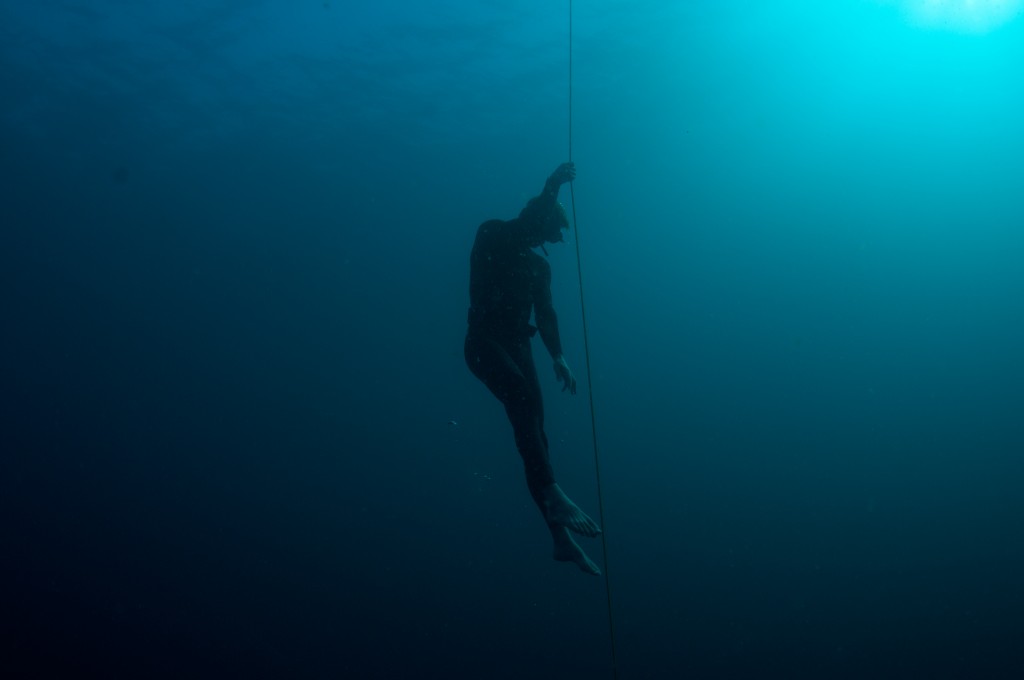








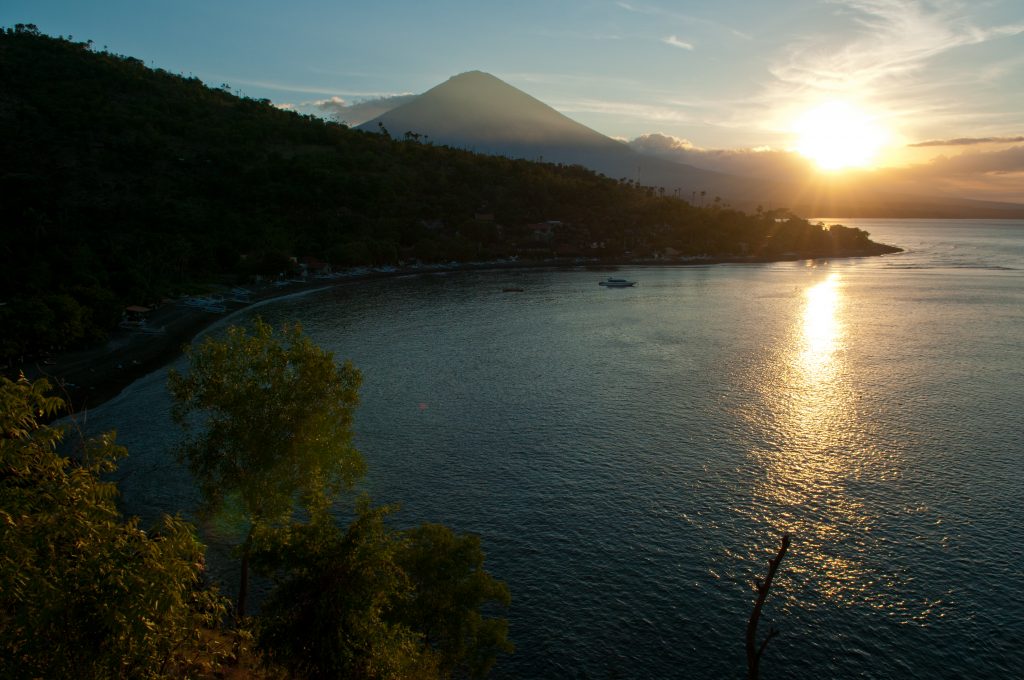


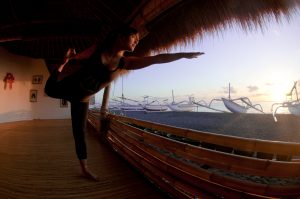
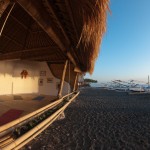
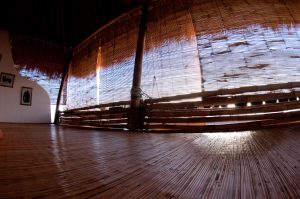





 For both complete beginners and more advanced students alike, the retreat will be a fascinating exploration of the mind and body.
For both complete beginners and more advanced students alike, the retreat will be a fascinating exploration of the mind and body.
